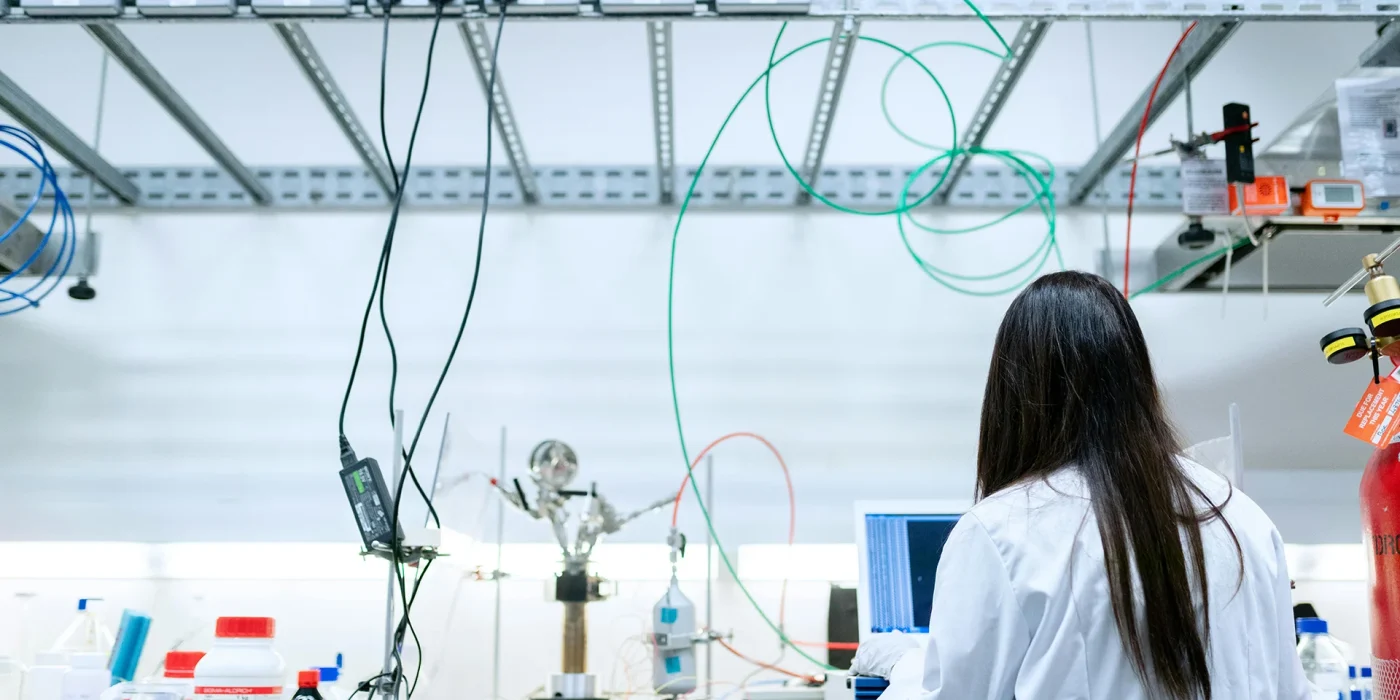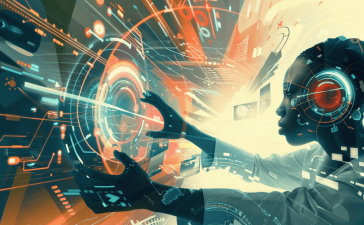The world today runs on the power of the web and technology. From communication and commerce to education and entertainment, technology has revolutionized nearly every aspect of human existence. The web — once a simple information-sharing platform — has evolved into a complex ecosystem that fuels global economies, drives innovation, and connects billions of people across the planet.
As we step deeper into the digital era, web and tech trends continue to redefine how we live, work, and interact. The boundaries between the physical and digital worlds are blurring, creating new opportunities — and new challenges — for individuals, businesses, and governments alike.
1. The Evolution of the Web: From Information to Interaction
The internet has come a long way since its early days. The first generation, known as Web 1.0, was static and informational. Users could read content but had little ability to interact. It was a one-way exchange — publishers created, and audiences consumed.
Then came Web 2.0, which transformed the internet into a dynamic, participatory space. Social media platforms, blogs, and interactive websites allowed users to generate and share content. This era gave rise to tech giants like Facebook, YouTube, and Twitter, ushering in the age of social connectivity and user-generated media.
Now, the world is moving toward Web 3.0, or the decentralized web. Built on blockchain technology, it aims to give users more control over their data, identity, and digital assets. Web 3.0 introduces new concepts like decentralized finance (DeFi), non-fungible tokens (NFTs), and the metaverse — signaling a shift toward a more democratic and transparent digital world.
This evolution illustrates a core truth: the web is not static. It is a living, evolving organism that continues to adapt to human creativity and technological advancement.
2. Artificial Intelligence: The Brain of Modern Technology
Artificial Intelligence (AI) stands at the forefront of technological innovation. What was once the stuff of science fiction is now part of daily life — from virtual assistants like Siri and Alexa to predictive algorithms in online shopping and streaming services.
AI enables computers to perform tasks that typically require human intelligence, such as learning, problem-solving, and decision-making. In business, AI-driven analytics help companies make smarter decisions by processing vast amounts of data quickly and accurately.
Machine learning (ML), a subset of AI, allows systems to improve automatically through experience. It’s used in personalized recommendations on platforms like Netflix, fraud detection in banking, and even medical diagnostics.
Moreover, Generative AI — the technology behind advanced language models and image creators — is revolutionizing content creation, coding, and design. Businesses can now automate routine tasks, enhance creativity, and streamline workflows with AI-powered tools.
However, as AI becomes more powerful, ethical concerns about data privacy, job displacement, and algorithmic bias are growing. The challenge ahead lies in finding a balance between innovation and responsibility.

3. Cloud Computing: Powering the Digital Economy
Cloud computing has redefined how data is stored, accessed, and managed. Instead of relying on physical servers, businesses now use remote servers hosted online — or “in the cloud.” This allows for flexibility, scalability, and cost-efficiency.
Major providers like Amazon Web Services (AWS), Microsoft Azure, and Google Cloud dominate the market, supporting everything from small startups to multinational corporations. The cloud is the foundation of many modern technologies, including streaming services, AI applications, and e-commerce platforms.
With the rise of hybrid and multi-cloud environments, businesses are now combining public and private cloud solutions to achieve greater flexibility and security. Cloud computing also supports remote work by allowing employees to collaborate seamlessly from anywhere in the world — a necessity in today’s post-pandemic workforce.
4. Cybersecurity in the Digital Age
As technology advances, so do the risks. Cybersecurity has become one of the most critical issues of the digital era. With sensitive data stored online — from financial records to personal information — individuals and businesses are more vulnerable than ever to cyberattacks.
Cybercriminals use increasingly sophisticated methods such as phishing, ransomware, and data breaches to exploit vulnerabilities. In 2024 alone, global cybercrime damages were estimated to exceed $10 trillion USD.
To combat these threats, cybersecurity technologies are evolving rapidly. Artificial intelligence and machine learning are being used to detect and neutralize attacks in real time. Multi-factor authentication, encryption, and biometric security are becoming standard defenses.
For businesses, cybersecurity is no longer optional — it’s a fundamental part of trust and brand integrity. As the saying goes, “in the digital world, trust is the new currency.”
5. The Internet of Things (IoT): Connecting the World
The Internet of Things (IoT) refers to the network of physical devices — from smartphones and wearables to cars and household appliances — connected to the internet. These devices collect and share data, creating smarter and more efficient systems.
IoT technology is transforming industries:
-
In healthcare, wearable devices track vital signs and help doctors monitor patients remotely.
-
In agriculture, sensors measure soil quality and optimize irrigation.
-
In smart cities, connected systems manage traffic, energy, and waste to improve urban living.
The potential of IoT is enormous, but it also raises questions about data security, privacy, and sustainability. With billions of devices connected globally, protecting sensitive information becomes increasingly complex.
Nevertheless, IoT is paving the way for a more connected, automated, and intelligent world — one where machines communicate seamlessly to improve daily life.
6. The Rise of 5G and the Future of Connectivity
Connectivity is the foundation of all digital progress, and 5G technology is taking it to the next level. With speeds up to 100 times faster than 4G, 5G enables real-time communication, ultra-fast downloads, and improved network reliability.
This new generation of wireless technology is driving innovation in multiple sectors:
-
Autonomous vehicles rely on low-latency connections for safe navigation.
-
Remote surgeries become possible with instant data transmission.
-
Virtual and augmented reality (VR/AR) experiences become smoother and more immersive.
Beyond personal devices, 5G supports the growth of smart cities, advanced manufacturing, and digital healthcare. As more nations roll out 5G infrastructure, it will lay the groundwork for an even more interconnected and data-driven society.
7. The Human Side of Technology
While technology enhances convenience and productivity, it also transforms how people live and interact. Social media, for example, has connected billions of users globally — yet it has also raised concerns about privacy, misinformation, and mental health.
The challenge for society is to use technology as a tool for empowerment rather than dependency. Digital literacy, critical thinking, and responsible use of online platforms are essential skills in the modern age.
Furthermore, as automation and AI reshape the job market, lifelong learning and upskilling have become necessities. The future workforce must adapt by developing both technical and emotional intelligence — the ability to work alongside intelligent systems while maintaining creativity and empathy.
8. The Future of Web and Tech: Integration and Innovation
Looking forward, the future of the web and technology is one of integration — where AI, IoT, blockchain, and immersive media converge to create seamless digital experiences.
The metaverse, for instance, represents a vision of a 3D internet where people can socialize, work, and play in virtual environments. Quantum computing promises to revolutionize problem-solving by performing complex calculations millions of times faster than current systems.
Meanwhile, sustainability in tech is becoming a global priority. Green data centers, energy-efficient hardware, and eco-friendly software design are reducing the environmental footprint of the digital world.
Ultimately, the next chapter of technology will focus on making innovation more inclusive, ethical, and human-centered.

Conclusion
The web and technology are not just tools — they are the foundation of modern civilization. They influence how we communicate, learn, create, and connect. The ongoing digital revolution has the power to solve humanity’s greatest challenges — if guided by wisdom, ethics, and inclusivity.
As artificial intelligence grows smarter, networks faster, and devices more connected, one truth remains constant: technology is only as powerful as the people who use it. The future of the web and tech lies not just in machines, but in our collective ability to use them responsibly — to build a smarter, fairer, and more sustainable world.



